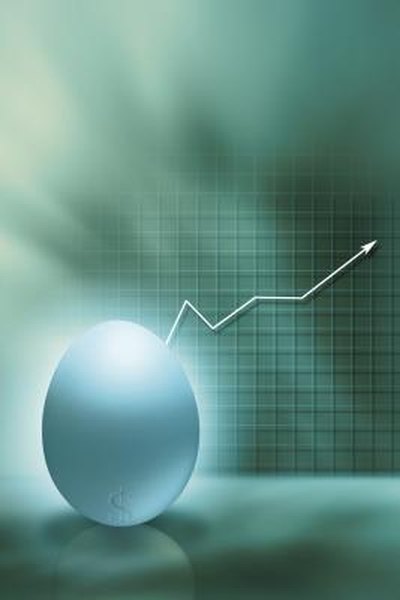How Often Do High Yield Savings Accounts Change Their Rates?
High-yield savings account rates can usually fluctuate.
Comstock Images/Stockbyte/Getty Images
High-yield savings accounts offer returns that are higher than the average savings account, and many have initial interest rates that are relatively attractive. However, the fine print on many of these accounts specifies that the rate can change at any time. As such, it can be hard to predict how long any given high-yield savings account will maintain at its rate.
High Yield Savings Benefits
While the adjustability provision of many high-yield savings accounts might make them seem unattractive, they nevertheless offer some real benefits. Many of these accounts offer significantly higher returns than a typical account for however long the rate lasts. As of October 2013, the average interest rate on a regular savings account was 0.06 percent, while high-yield accounts paid rates approaching 1 percent, according to CNN Money. Furthermore, many of these accounts are held by online banks that offer easy access, no fees and little or no minimum balance requirements.
Adjustable Rate Realities
In practice, the adjustable rate provision of a high-yield savings account might not be as problematic as it seems. Banks that offer high yields frequently do it because they want to attract customers. If a bank lowered the rate significantly, it would run the risk of losing business to another bank that offered a more attractive rate. At the same time, if a high-yield saving account is used for short-term savings, the risk of suffering a significant loss from a rate adjustment is minimal. For example, if a savings account with $10,000 went from a 1 percent return to a 0.1 percent return, the monthly interest payments would go from roughly $8.33 to 83 cents. While this is a big percentage swing, it's only a loss of $7.50 per month. With this in mind, banks can adjust rates when marketing purposes demand or when a major shift happens in the economy. These can happen after the Federal Reserve Open Market Committee meets to adjust rates, which happens every six months, or at the end of the month or quarter.
Fixing With CDs
One way to get a high rate and to lock it in is to put money in a certificate of deposit account. CDs offer higher fixed rates in exchange for a depositor's willingness to leave her money untouched for a set period. Typically, the longer the CD term, the higher the rate, although banks may offer higher promotional rates on CDs with shorter terms.
Adjustability and Low Interest Rates
When interest rates are high, a savings account with an adjustable rate might not be desirable, as there is a greater chance the bank will adjust down than adjust up. However, when interest rates are low, an adjustable rate provision is less dangerous, because the chance of interest rates going up rather than down is higher. An investor who thinks interest will go up in the near term might choose to use an adjustable account so he will be positioned to take advantage of the higher rates he expects.
References
- SallieMae: Sallie Mae Bank's Deposit Account Terms and Conditions Agreement
- American Express Bank: Personal Savings Account From American Express Bank, FSB
- CNN Money: Savings Accounts With the Highest Yields
- Consumerism Commentary: TIAA Direct High-Yield Savings Account
- LearnBonds: Why High Yield Savings Accounts Are Now a Better Deal Than CDs
- Board of Governors of the Federal Reserve System: What Is the FOMC and When Does It Meet?
Writer Bio
Steve Lander has been a writer since 1996, with experience in the fields of financial services, real estate and technology. His work has appeared in trade publications such as the "Minnesota Real Estate Journal" and "Minnesota Multi-Housing Association Advocate." Lander holds a Bachelor of Arts in political science from Columbia University.

